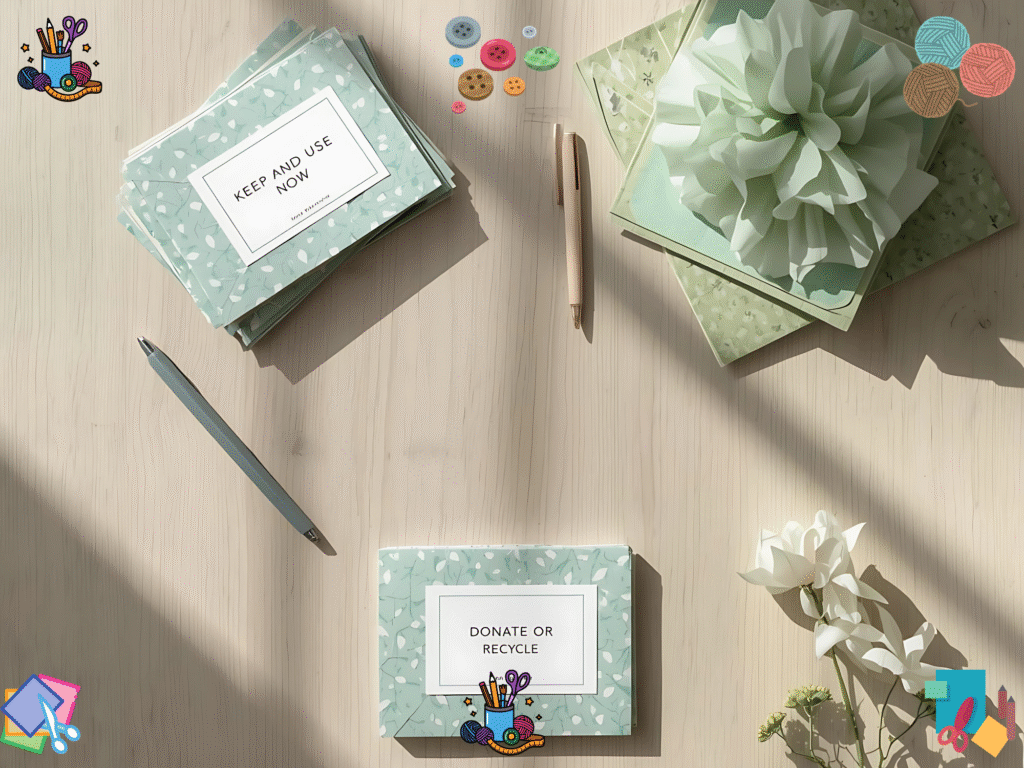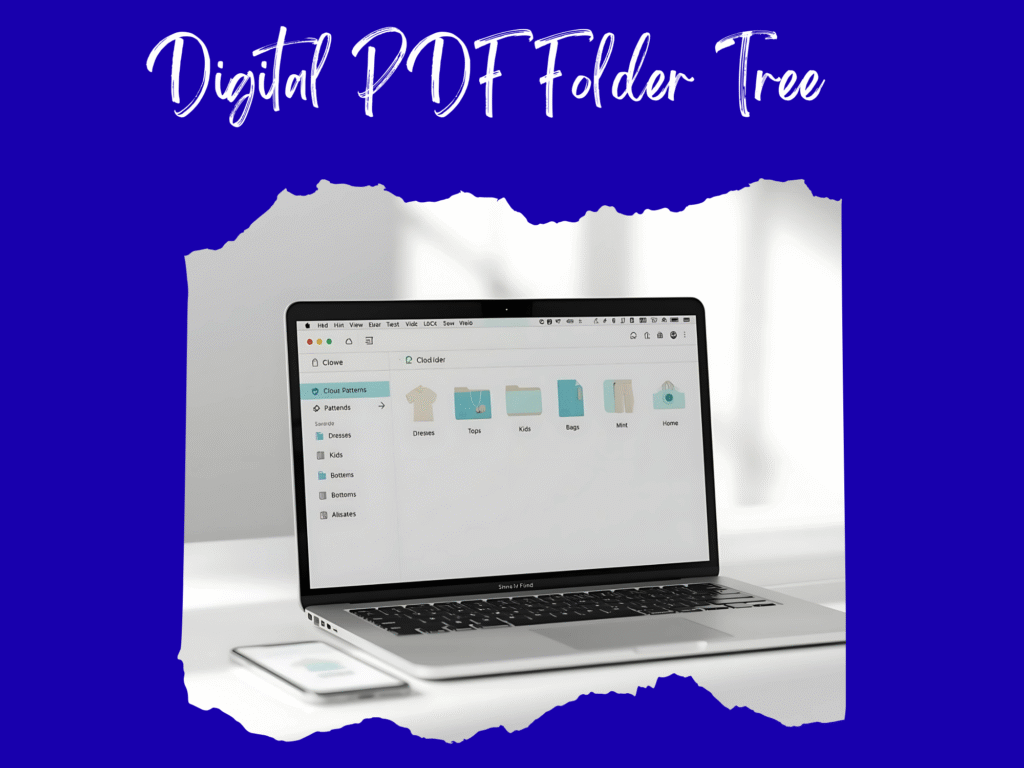Stacks of pattern envelopes. Random downloads on your laptop. I have been there. A clear plan fixes this fast. In this beginner guide, I show an easy sewing pattern organization system for both paper and PDF files. You will set up a filing system for craft patterns, protect the paper, and build a simple digital home for your PDF sewing patterns. The goal is simple: find the pattern you want in seconds and keep it safe for next time.
What you need and why it matters
Paper patterns tear and fade. Digital files get lost in messy folders. Good storage and clear names stop the stress.
Step 1: Sort once, then store
Lay out all your craft patterns sewing piles in one place. Make three stacks:
- Keep and use now
- Keep and store
- Donate or recycle

As you sort, put the keep items into quick groups like Tops, Bottoms, Dresses, Kids, Bags, Home. This will become your filing system.
Step 2: Pick a paper home you like to use
You have two easy options that work well for beginners.
Option A: File box and envelopes
Use a letter size or legal size file box with hanging folders. Put each pattern in a large envelope. Add a cover slip or the original envelope to the front. Label the hanging folder by type, like Dresses or Bags. Photo storage boxes and comic style archival sleeves also work well for long term care when they are acid free and lignin free.

Option B: Binder with clear sleeves
Use a 2 to 3 inch binder with heavy clear sleeves. Slip the envelope art or a printout of the pattern cover into the front of each sleeve. Put the tissue and instructions behind it. Binders are great if you like to flip and plan.
Keep boxes and binders away from damp spaces and direct light. Store at room temperature and keep them off the floor.

Step 3: Make labels that work fast
Use large, simple labels. Put the designer, pattern name or number, size range, and type. Example:
- Simplicity 1234, Dress, Sizes 6 to 14
- Free tote bag, Beginner, One size
- Kids pajama set, PDF, Size 8
Color dots help too. Try blue for adults, green for kids, yellow for bags and home.
Step 4: Build a clean digital system for PDF sewing patterns

PDF sewing patterns are easy to manage when every file has a clear home. Pick one cloud service you already use, like Google Drive, then create a short folder tree:
- Sewing Patterns
- Dresses
- Tops
- Bottoms
- Kids
- Bags
- Home
- Dresses
Use a naming rule so every file sorts in a helpful way. Keep names short and use the same order:
Designer_Pattern-Name_Type_Size_Notes.pdf
Example: Peppermint_Wrap-Dress_Dress_6-14_A4.pdf
Google suggests using a consistent naming convention and color coding folders so files are easier to find. That simple rule will save you time.
Do you share patterns with a sewing buddy or team? Put shared files in a shared drive and set clear access. That way everyone sees the latest version.
Free Sewing Pattern Organization Kit
Download the free, easy-to-use template in the link below to make life a little easier for you as you start your fast crafting journey:
Step 5: Keep a simple index
An index is a list of what you own. You can do this three ways:
- A one page tracker you print and keep in your binder.
- A simple spreadsheet with columns for Designer, Pattern, Type, Size, Format, Notes.
- A note app page with the same fields.
Smart tips for printing and storing PDFs
When you print PDF sewing patterns, always print the test square first. Measure it. If it is off, fix the printer settings before you print the rest of the pages. Many pattern makers put the test square on page 1, but not always, so check the file first.
After you assemble the pages, fold pieces along the lines and store them in a large envelope. Put that envelope in your file box or binder so your paper and digital systems stay in sync.
Keep paper patterns safe for the long run
Use supportive sleeves or folders that are acid free and lignin free. Store flat when you can, and keep away from heat and light. These basic care rules come from preservation experts and will help your envelopes and tissue last.
A weekly 10 minute routine
Your sewing pattern organization will only take a few minutes to maintain. Do this once a week:
- Put new downloads into the right folder and rename them.
- Update your index with one new line.
- File any paper pieces that are loose on your table.
- Recycle duplicates or sizes you know you will not use.
Quick start checklist
- Pick file box or binder for paper patterns.
- Set the folder tree for PDF sewing patterns.
- Choose one naming rule and stick to it.
- Label everything in plain, large print.
- Print the test square first for every PDF. So Sew Easy
- Keep a simple index you will update.
Internal resources to speed you up
I built a few free tools to help you start today:
- Fabric Organization Template
- Craft Time Goal Planner
- Visit our blog home for more craft patterns ideas and storage tips
Use the templates with your file box or binder. They match the steps in this post.
Final word
Sewing pattern organization does not need a big system. It needs a few steady habits you will keep. Give paper patterns a safe home. Give digital files clear names and folders. Keep one simple index. In a week, you will see the change. In a month, you will feel calm every time you sew. Your craft patterns and your pdf sewing patterns will be easy to find, easy to use, and protected for the next project.




